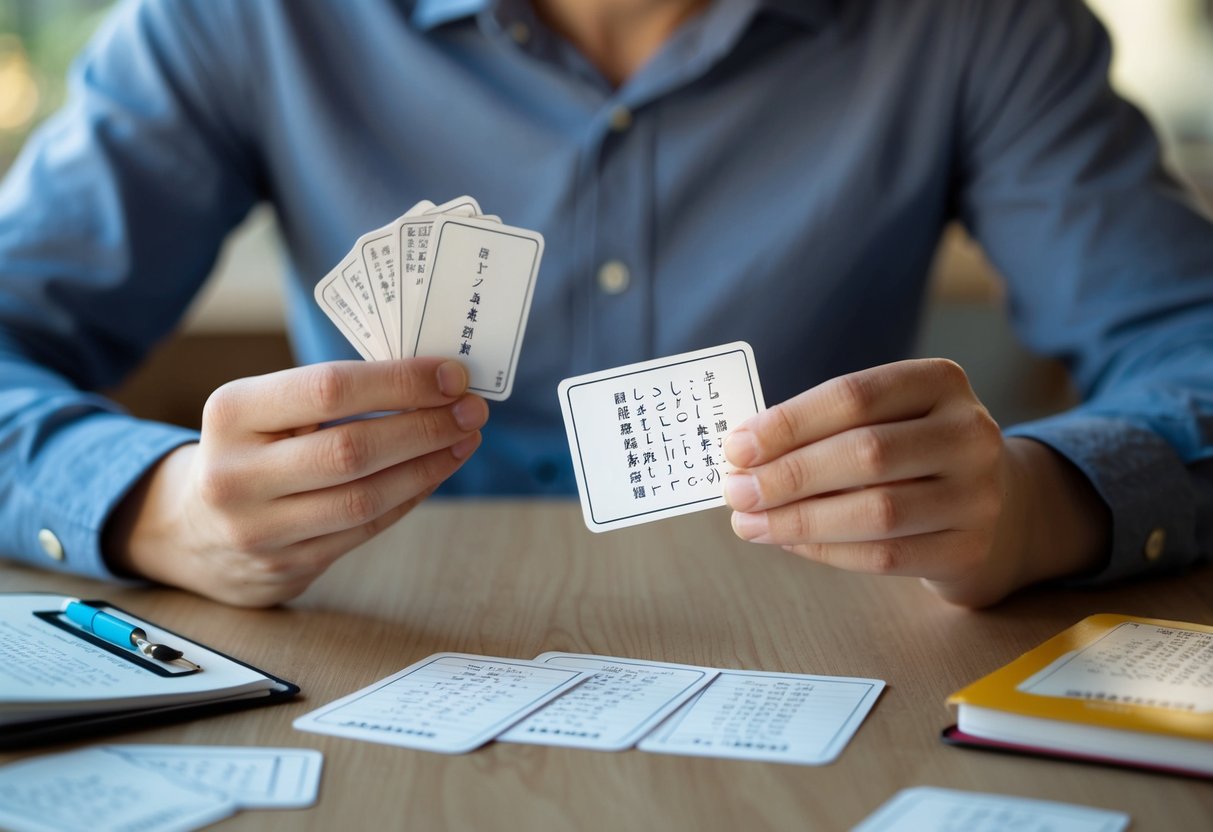
Learning Japanese can seem like a daunting task, but it’s absolutely achievable with the right approach.
The key to mastering Japanese is to start with the basics: learning the alphabet and fundamental vocabulary.
The Japanese language has three writing systems: Hiragana, Katakana, and Kanji. Familiarizing yourself with these alphabets is an essential first step.
After you've grasped the alphabets, it’s important to focus on sentence structure and grammar. Understanding how sentences are formed will allow you to communicate more effectively.
Incorporate practice into your daily routine with resources like Tofugu's detailed guide and Duolingo's bite-size lessons. These tools can help make your learning experience more structured and enjoyable.
Don’t forget to immerse yourself in a cultural context. Consuming Japanese media, engaging in language exchanges, or even using NHK's free courses can deepen your understanding and proficiency.
Combining rigorous study habits with cultural immersion creates a well-rounded learning journey that brings you closer to fluency.
Key Takeaways
- Master the Japanese alphabets (Hiragana, Katakana, and Kanji)
- Focus on developing grammar and sentence structure
- Immerse yourself in Japanese culture and practice regularly
Mastering the Japanese Alphabets
To achieve proficiency in Japanese reading and writing, you must master hiragana, katakana, and kanji. Each script serves a unique purpose and understanding their roles is crucial for your language progress.
Understanding Hiragana and Katakana
Hiragana and katakana are collectively known as kana. Hiragana consists of 46 characters and is primarily used for native Japanese words and grammatical functions. You begin with hiragana to build a strong foundation for reading and writing.
Katakana also has 46 characters and represents the same sounds as hiragana. It is used for foreign loanwords, onomatopoeia, and scientific terms.
Mastering kana involves recognizing and writing each character, practicing daily, and using tools like flashcards and writing exercises.
Tackling the Kanji Challenge
Kanji represents words or phrases and can have multiple meanings and pronunciations. It originated from Chinese characters and requires a unique approach.
Start with basic kanji characters, focusing on those used frequently in everyday life.
Learn the radicals, basic components of kanji, to simplify the memorization process. Use resources like kanji dictionaries, apps, and books to practice writing and reading.
Aim to learn at least 100 essential kanji characters to build a solid foundation for your Japanese language journey. As you progress, increase your knowledge by incorporating more complex kanji into your studies.
Developing Japanese Grammar and Sentence Structure
To master Japanese, understanding its unique grammar rules and sentence structure is crucial. This involves learning about particle usage, verb placement, and creating complex sentences that convey varying nuances.
The Basics of Japanese Grammar
Japanese grammar often surprises learners due to its distinct structure. Unlike English grammar, Japanese sentences typically follow a Subject-Object-Verb (SOV) order.
For example, instead of saying "I eat an apple," you would say "I an apple eat."
Particles play a vital role. The particle "wa" (は) identifies the topic. For instance, in the sentence "私は学生です" (I am a student), "は" marks "I" as the topic.
Another key particle is "を" (wo), signifying the direct object of an action.
Articles like "a," "an," and "the" do not exist in Japanese, which simplifies noun usage. Verbs usually appear at the end of sentences, which is drastically different from English.
Understanding particle roles and keeping the SOV structure in mind will greatly enhance your grasp of basic Japanese grammar.
Complex Sentences and Nuances
Once you are comfortable with the basics, it's time to tackle complex sentences and nuances.
Japanese allows for agglutinative structures, meaning you can add affixes to verbs to modify meaning. For example, the verb root ending in "て" or "で" can expand into various forms to express different tenses and politeness levels.
Japanese phrases often rely on context due to the omission of subjects when they are understood. This can create nuances that may not directly translate to English.
Advanced particles like "が" (ga) and "も" (mo) bring additional depth. "が" often marks the subject in complex sentences, while "も" means "also" or "too."
By mastering these components, you can create nuanced, context-rich sentences that accurately convey complex thoughts.
Enhancing Vocabulary and Pronunciation

Expanding your Japanese vocabulary and perfecting your pronunciation are crucial steps in mastering the language. By focusing on these two areas, you can significantly improve your ability to speak Japanese fluently and accurately.
Expanding Japanese Vocabulary
To build a strong vocabulary, incorporate different techniques. Start by collecting vocabulary from your Japanese textbook or other sources like YouTube and TV.
Using topics that interest you helps retain new words. Practice chunking, which means grouping related words together in your notebook.
Engage in consistent active study by creating summaries of content you enjoy. Regularly review these notes, and use apps and flashcards for spaced repetition.
Consider techniques offered in 10 Tricks to Improve Japanese Vocabulary that integrate various study methods.
Perfecting Japanese Pronunciation
To perfect your pronunciation, start by understanding the sounds unique to Japanese.
Focus on characters that can be confusing when typed, such as ふ (fu). Listen to native speakers through audio files or videos.
Shadowing, a method where you listen to Japanese words and phrases and repeat them out loud, is incredibly effective.
Practicing with native speakers, either online or in person, will help you learn tones and intonation. Check out resources like Japanese Pronunciation for tips.
Lastly, always be mindful of small nuances in pronunciation to reduce your accent and improve clarity.
Effective Study Habits and Resources

When learning Japanese, two crucial factors for success are maintaining a consistent study routine and utilizing quality online tools and websites. These strategies will aid significantly in achieving fluency and retaining information over time.
Creating a Consistent Study Routine
Developing a steady study routine is central to mastering Japanese.
Start by setting specific, manageable goals like learning ten new kanji characters per week or completing one chapter of your textbook.
Consistency is key, so dedicate a set amount of time daily or weekly to your studies.
Using a spaced repetition system (SRS) can boost retention by scheduling reviews at optimal intervals. This method ensures that you regularly revisit material just before you might forget it.
Apps like Anki or Memrise incorporate SRS and can be highly effective.
Incorporate a mix of activities in your routine. Combine listening exercises, reading practice, and writing.
Use Japanese media such as podcasts, news sites, and manga to keep yourself engaged. Regularly take quizzes to test your knowledge and track your progress.
Structured content from reputable textbooks like Genki I is also beneficial.
Leveraging Online Tools and Websites
Harnessing the wealth of online resources can immensely enrich your learning experience.
Websites like Tofugu offer detailed guides and practical advice on learning Japanese vocabulary and grammar.
Additionally, Kuma Sensei provides structured study plans that can align with your learning goals.
Utilize comprehensive learning platforms such as WaniKani for kanji, which employs SRS to help you remember characters and their meanings.
Language exchange websites like iTalki enable you to practice conversation with native speakers. Duolingo offers a gamified approach to learning, making it fun to tackle new lessons and quizzes regularly.
Supplement these resources with real-life applications. Join language forums, participate in online discussions, and engage with Japanese content on social media. This multi-faceted approach ensures a well-rounded and effective learning path.
Immersing Yourself in Japanese Culture and Practice

To effectively learn Japanese, engaging deeply with the culture and practicing the language in real-world contexts are essential. These activities will enrich your understanding and improve your language skills.
Understanding Cultural Context
Experiencing Japanese culture will enhance your language journey. Watching Japanese dramas like "Kekkon Dekinai Otoko" can provide insights into societal norms and vocabulary.
Try listening to Japanese music, as it acquaints you with common phrases and pronunciation.
Keeping a Japanese diary can also be beneficial. Writing about your daily life, thoughts, or plans in Japanese helps you practice sentence structures and vocabulary. This method forces you to think in Japanese, promoting better fluency and comprehension.
Analyzing how language and culture intersect is crucial. For example, the phrase "くすりをのむ" means "to drink medicine," which differs from English usage. Such nuances are best understood through cultural immersion.
Practical Language Use and Immersion
Using Japanese in practical situations accelerates your progress. Ditching your English crutches may be intimidating but is necessary for improvement.
Engage in conversations with native speakers to build confidence and fluency.
Creating a consistent study routine helps establish good habits. Aim for daily practice, including reading, writing, listening, and speaking in Japanese.
Apps and online platforms offer various resources to maintain motivation and track your progress.
Incorporating various forms of media, such as news articles, podcasts, and social media, offers real-life language exposure. Watching Japanese films or TV shows provides context and immerses you in everyday language use.
Engaging with these practical exercises will help transform theoretical knowledge into usable skills, making your learning experience more effective and rewarding.
FAQs
Practicing with native speakers, using language exchange groups, and incorporating daily vocabulary study into your routine can significantly speed up your learning process. Flashcards and language apps are also helpful for memorizing vocabulary and grammar rules.
Yes, independent learners can make significant progress by committing to a regular study schedule. They can also engage with multimedia resources and join online communities for practice and feedback from native speakers.
Start with Hiragana and Katakana, the two basic alphabets. Use mnemonic devices and flashcards to memorize these characters. Then, practice pronunciation by listening to native speakers and repeating after them.
Achieving proficiency in Japanese varies per individual. Typically, consistent daily practice can lead to conversational proficiency in about 18-24 months. Advanced literacy, including mastering Kanji, may take longer.





































































